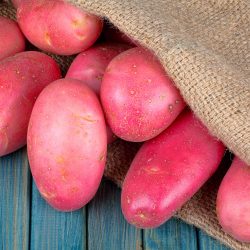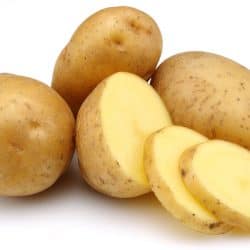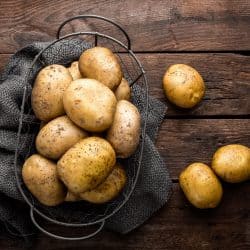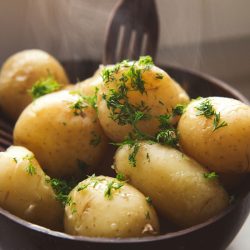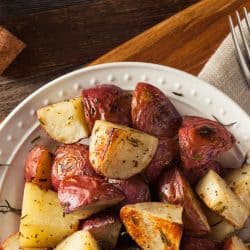These days, many recipes call for drying your potatoes before frying or roasting them, but you may have wondered if it's really necessary. So, should you dry potatoes before frying or roasting them? For your convenience, we did the research to bring you the answer.
Drying washed or soaked potatoes with a kitchen cloth or paper towels will help to achieve the best texture from the dish. If you parboil your potatoes, drain them well and let them air dry before further cooking. If your potatoes are still wet when you fry or roast them, they are more likely to turn out limp and soggy.
But if you still have some lingering questions about preparing potatoes, don't worry. Continue reading to learn more about preparing your potatoes for frying and roasting as well as other tips, such as picking the best potatoes for both methods.
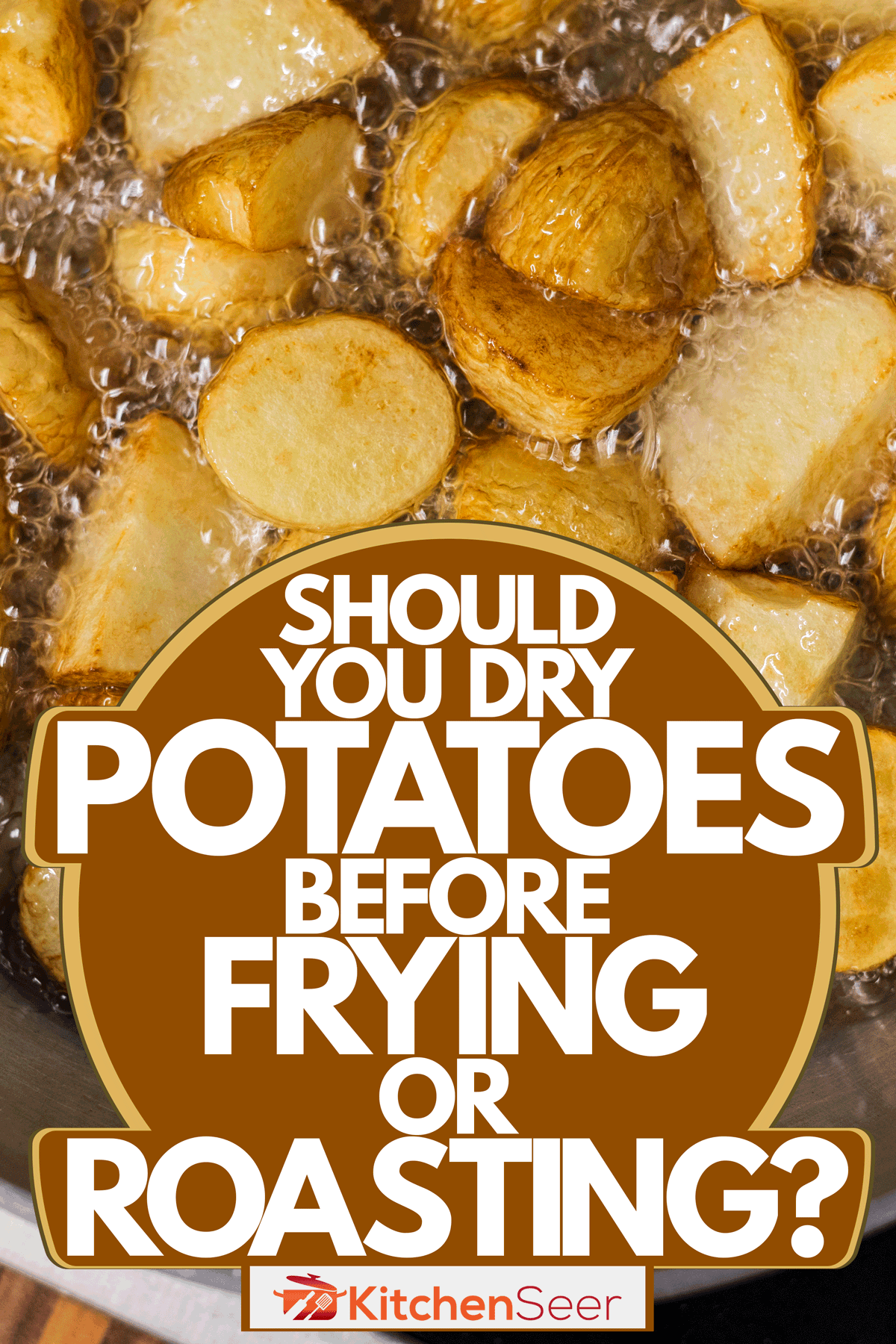
Should You Dry Potatoes Before Frying Or Roasting?
As we've mentioned, drying your potatoes before you fry or roast them will lead to the best crispy results. Too much water content can make the potatoes a little on the soggy side. And no one wants a soggy potato when you're expecting a tasty crunch or crisp. You can use a kitchen towel, a napkin, or really anything that will soak up that excess water on the outside of your potato.
Do you soak potatoes in water before frying?
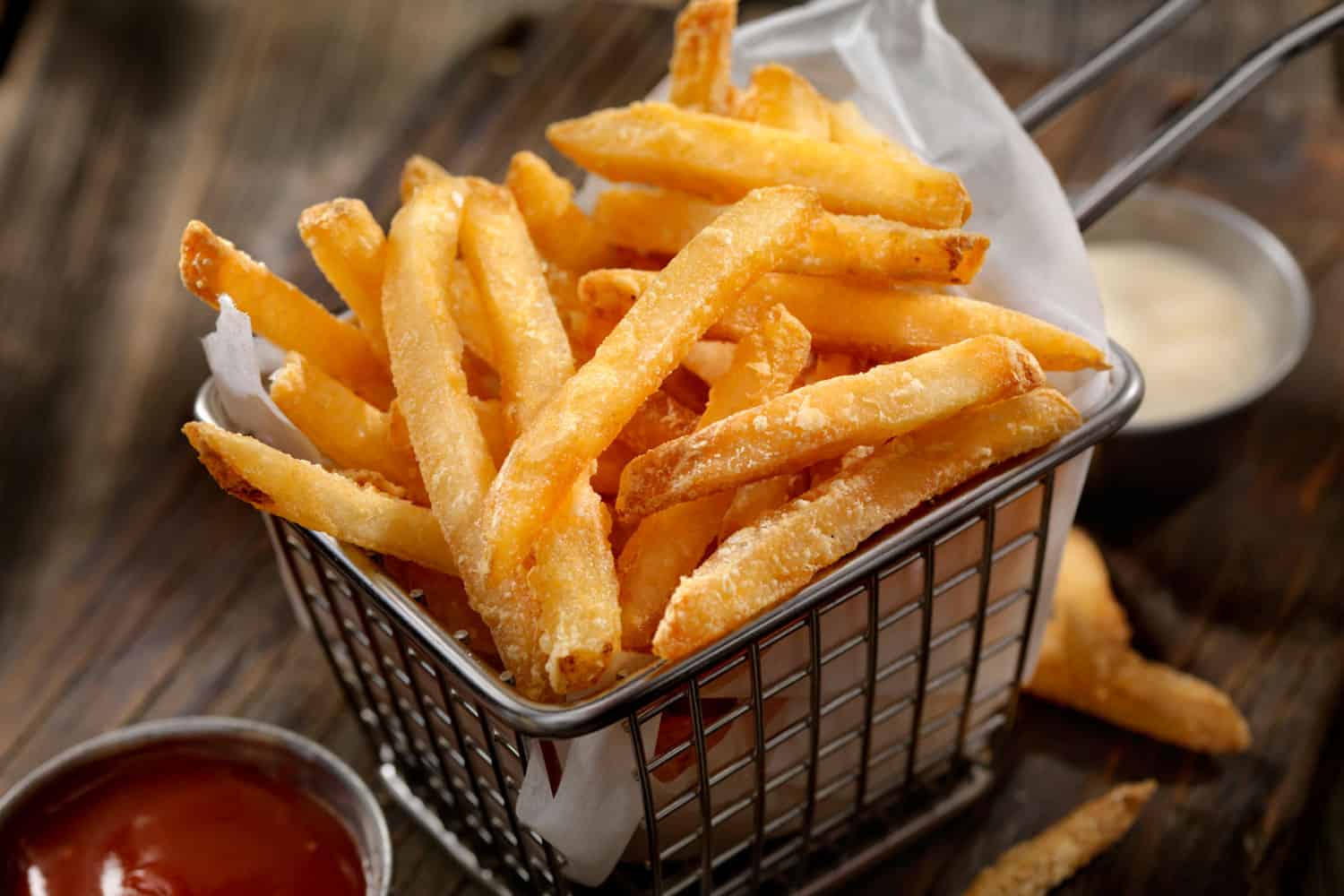
Most recipes for fried potatoes call for soaking your cut potatoes for anywhere from 30 minutes to overnight before cooking.
This process improves the quality of fries and chips because it draws out some starch from the potatoes. Removing some starch helps prevent the potatoes from sticking. It also helps the water steam and escape the potatoes during cooking, improving the texture. Beyond that, the remaining surface starch starts to gelatinize, resulting in a crispier crust.
The benefits of soaking might be improved by adding salt to your water. In one study, researchers soaked cut potatoes in room-temperature water mixed with various amounts of salt for different lengths of time. They then checked the texture and how much oil the potatoes absorbed when fried. Their finding? Soaking in a 3% salt solution (about 1.5 teaspoons salt per cup of water) for 50 minutes got the best results.
Getting the perfect crunch is reason enough to soak your potatoes, but it might even make them healthier. Removing some starch decreases the carb load in your fries. Research has shown it reduces acrylamide, a chemical that occurs when potato starches are fried, which studies have suggested may increase the risk for several types of cancer.
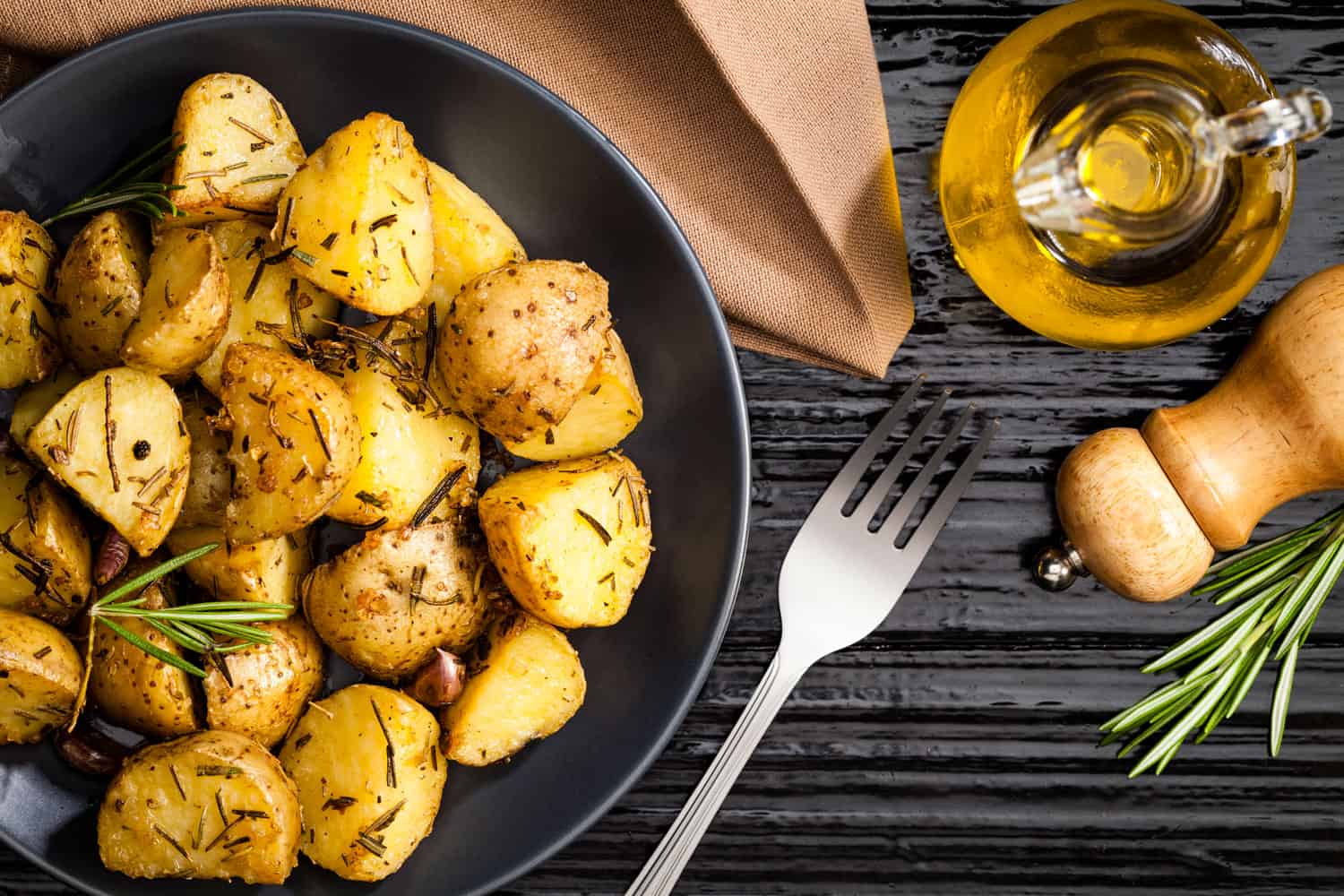
How long can you soak potatoes in water before roasting?
While soaking is a common technique to improve fried potatoes, many of the same benefits apply to roasting potatoes too.
Different recipes call for different amounts of time. But much like fried potatoes, you can go anywhere from 30 minutes to overnight, as recommended in this recipe from Gimme Some Oven.
Parboiling Roast Potatoes
Others recommend a different approach to soaking: parboiling. Parboiling is partially cooking your potatoes in boiling water before roasting them.
To parboil your potatoes, boil them until they are a little more than halfway done after you've cut them. Afterward, drain them and let them rest a few minutes so some of the water on the surface evaporates.
When you parboil your potatoes, they won't need to cook as much in the oven. This means you can cook them at a higher temperature for a shorter time, which will help them develop a crust without drying out.
A great recipe for roast potatoes that uses the parboiling technique is this one from Erren's Kitchen.
Choosing The Best Potatoes
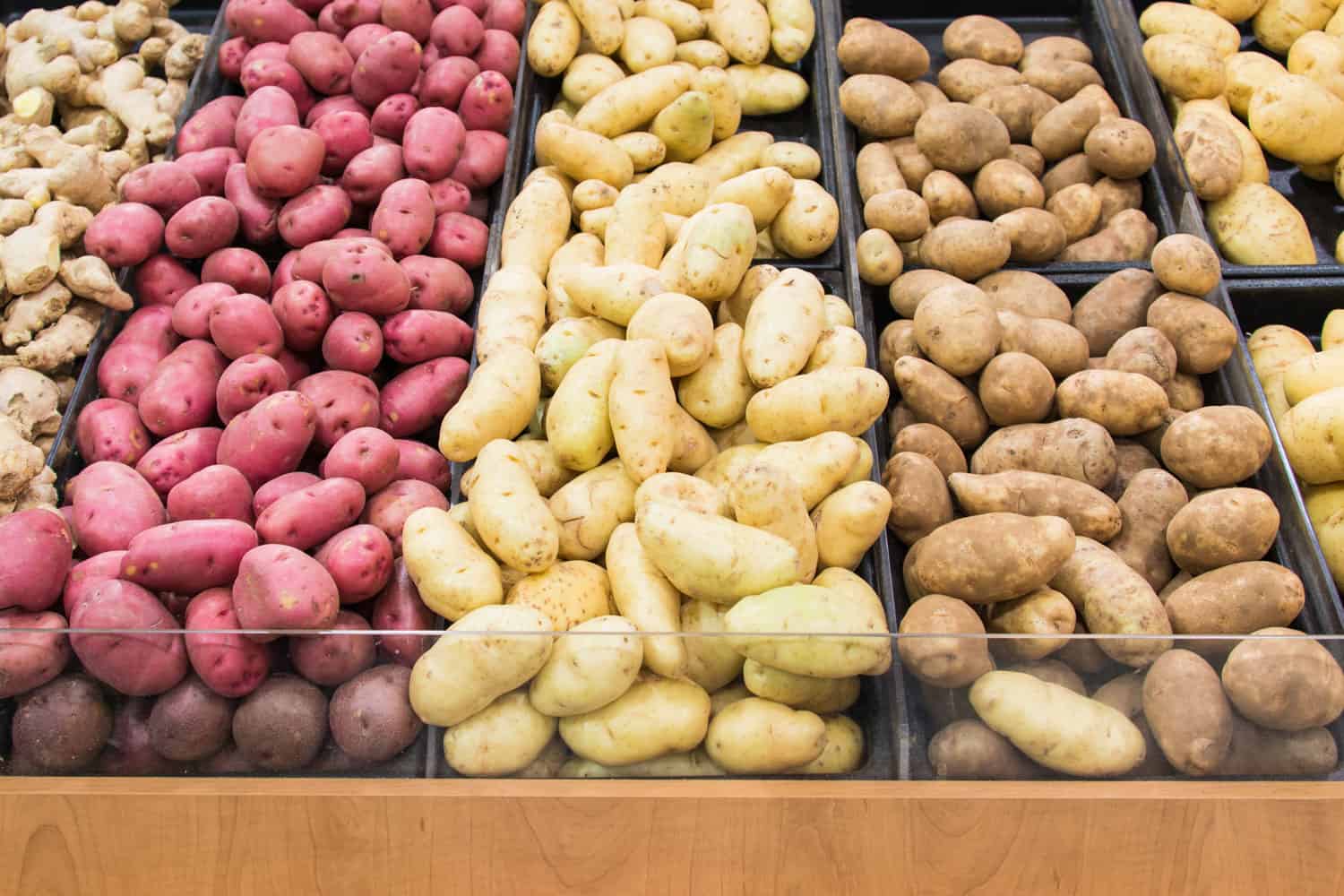
These days, potatoes are enjoyed all over the world: the hot and sour stir-fry, tu dou si, in China; golden brown, crispy rösti in Switzerland; and savory and comforting mashed potatoes in the United States. Potatoes got their start thousands of years ago in modern-day Peru where the Inca grew more than 300 types. According to the International Potato Center (yes, it's a real thing!), there are more than 4,000 edible varieties of potato cultivated today, most of those in the Andes where they first grew up.
While you are unlikely to find anywhere near that number in the typical supermarket in the US, you will often find around eight different varieties sold. Choosing the right ones can seem daunting at first, but it is easier if you know what you're looking for.
To simplify this, many people lump the humble taters into two categories: waxy and starchy. In truth, this can be seen more as a continuum with waxy potatoes representing those with more water content and less starch and starchy potatoes as, well, the opposite.
Some recipes are flexible and will work with a wide variety of potatoes. For others, it's important to use the correct spud or your dish might turn out a dud.
What potatoes are best for frying?
Frying is a time when the potato you choose can be crucial. The best commonly available types of potato for frying are on the starchy side, particularly Russet and white potatoes. But why?
Fried potatoes should be light, crispy, and (unless you're frying up some potato chips) fluffy in the middle. To accomplish this, they need to cook at high heat and quickly so the water can evaporate and steam the inside of the potatoes as the surface starches form a crust and get that perfect golden hue.
Waxy potatoes, like red potatoes and fingerlings, contain a lot of water and not much starch. This will lead to potatoes that are limp, soggy, and provide evidence that not everything is better fried.
If you want to cut back on the calories, golden and white potatoes are perfect for these air-fryer potatoes from Seasons and Suppers.
What potatoes are best for roasting?
Roasting is much more forgiving than frying when it comes to choosing your potato. Different potatoes will deliver different results, with starchy potatoes being paler and crisper and waxier potatoes being darker and softer. So, the potato you choose depends on your preference.
J. Kenji Lopez-Alt at SeriousEats.com uses Yukon gold potatoes to get the perfect combo of crunch and color. He also parboils his potatoes, adding baking soda to the water, to get the perfect surface starches for a crisp and golden crust.
Why are my roast potatoes not crispy?
If all crispy roast potatoes are alike, every limp potato is limp in its own way. Or at least in a few ways. Let's look at a few of the usual suspects.
Wet Potatoes
One reason your potatoes might not get the desired crust is that they were not completely dry before going into the oven. If your potatoes are just washed or have soaked, you can pat them dry with paper towels or a clean kitchen towel. If you parboiled your potatoes, be sure to drain them well and let them rest for a couple of minutes so some of the excess moisture can evaporate.
Overcrowding
Another possible culprit is overcrowding the pan. For the surface of the potatoes to crisp up, they need space; otherwise, they end up steaming instead of roasting. Use a large enough pan and try to arrange the potatoes in a single layer to get the best results. You can use multiple pans if you need to, but be sure to rotate them halfway through cooking to get even cooking.
Fussing Too Much
Especially when trying new recipes, it's tempting to check the oven often, flipping the potatoes every few minutes to check their progress. Fight this urge, though. Dropping the oven temperature by opening the door and flipping your spuds before they start to get a crust are sure-fire ways to make sure they don't.
Type Of Potato
While waxy potatoes can be a good delicious roasted, such as these rosemary potatoes from Taste Of Home, they don't get the same crust as starchy potatoes do. If crunch is what you're after, you might want to try a starchier option.
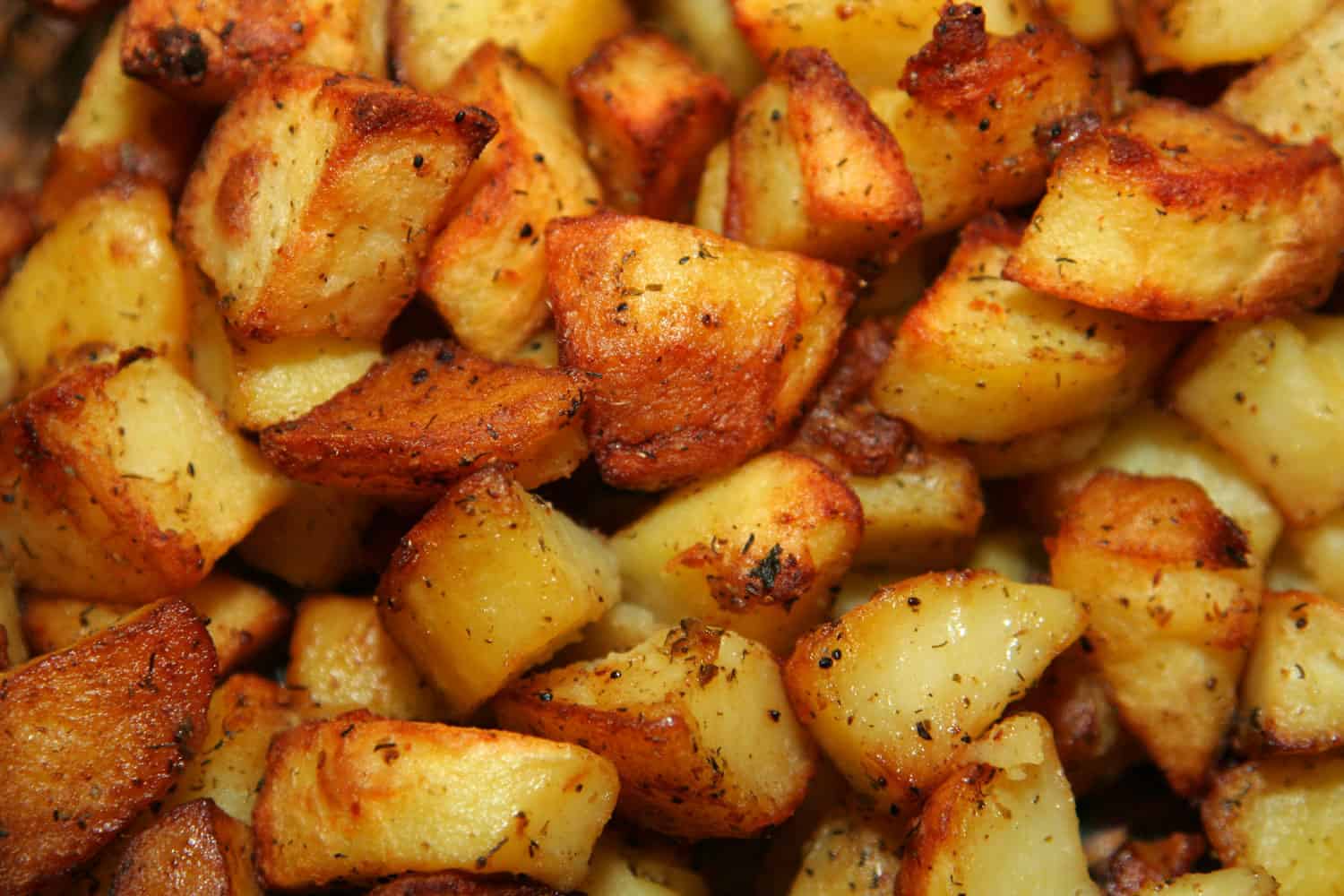
Final Thoughts
We've seen how soaking and drying your potatoes properly are essential to getting the texture you crave from your roasted and fried potatoes. We also learned how to choose the right potato for the job and some ways to troubleshoot underwhelming spuds. With these tricks up your sleeve, you are well on your way to potato bliss!
Prep your potatoes in a breeze with the right peeler. Read all about it at our post on 8 Types Of Potato Peelers.
Looking for even more great fare to fry up? Get some great ideas from our article "What Can You Use A Deep Fryer For?"

